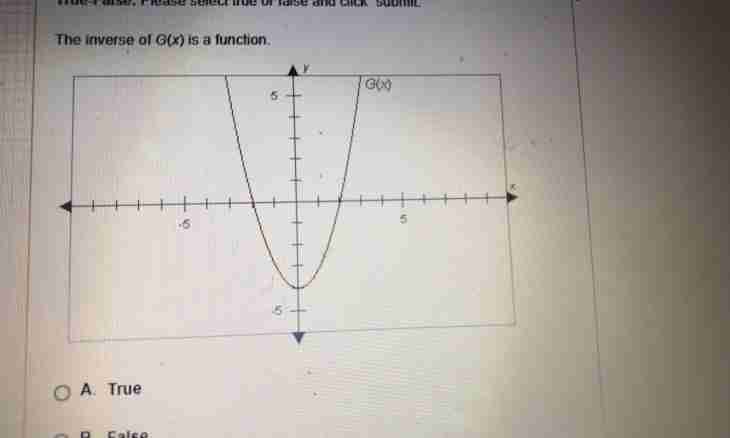Private derivatives in the higher mathematics are used for the solution of tasks with functions of several variables, for example, when finding full differential and extrema of function. To learn whether function has private derivatives, it is necessary to differentiate function on one argument, including other her arguments constants and to execute similar differentiation on each argument.
Basic provisions of private derivatives
Private derivative on x functions g = f (x, y) in a point of C (x0, y0) is called the limit of the relation of private increment on x functions in a point of C to increment ∆x at aspiration of ∆x to zero.
Also it can be shown as follows: if to one of function g arguments = f (x, y) to give increment, and other argument not to change, function will receive private increment on one of arguments: Δyg=f (x, y+Δy) - f (x, y) – this private increment of function g on an argument at; Δxg=f (x+Δx, y) - f (x, y) – this private increment of function g on an argument x.
Rules of finding of a private derivative for f (x, y) just the same, as well as for function from one variable. Only at the time of definition of a derivative one of variables needs to be considered at the time of differentiation constant number – a constant.
Private derivatives for function of two variables g (x, y) register in the following type of gx ′, gy ′ and are on the following formulas:
For private derivatives of the first order:
gx ′= ∂ g∂x,
gy ′= ∂ g∂y.
For private derivatives of the second order:
gxx ′′ = ∂ 2g∂x∂x,
gyy ′′ = ∂ 2g∂y∂y .
For the mixed private derivatives:
gxy ′′ = ∂ 2g∂x∂y,
gyx ′′ = ∂ 2g∂y∂x.
As the private derivative is a derivative of function of one variable when the value of other variable is fixed, its calculation happens by the same rules, as calculation of derivative functions of one variable. Therefore for private derivatives all basic rules of differentiation and the table of derivative elementary functions are fair.
Private derivatives of the 2nd order of the g=f function (x1, x2..., xn) are called private derivatives from its private derivatives of the first order.
Examples of solutions of private derivatives
Example 1
To find private derivatives of the 1st order from function g (x, y) =x2−y2+4xy+10
Decision
For finding of a private derivative on x we will consider y a constant:
gy ′= (x2−y2+4xy+10) ′=2х−0+4у +0=2kh +4u.
For finding of private derivative function we will determine by y also by a constant:
gy ′= (x2−y2+4xy+10) ′=−2y+4x.
Answer: private derivative gx ′ =2x+4y; gy ′ =−2y+4x.
Example 2.
To find private derivatives of the 1st and 2nd orders from the set function:
z=x5+y5−7x3y3.
Decision.
Private derivatives of the 1st order:
z′x=(x5+y5−7x3y3) ′x=7x4−15x2y3;
z′y=(x5+y5−7x3y3) ′y=7y4−15x3y2.
Private derivatives of the 2nd order:
z′xx=(7x4−15x2y3) ′x=28x3−30xy3;
z′xy=(7x4−15x2y3) ′y=−45x2y2;
z′yy=(7y4−15x3y2) ′y=28y3−30x3y;
z′yx=(7y4−15x3y2) ′x=−45x2y2.
